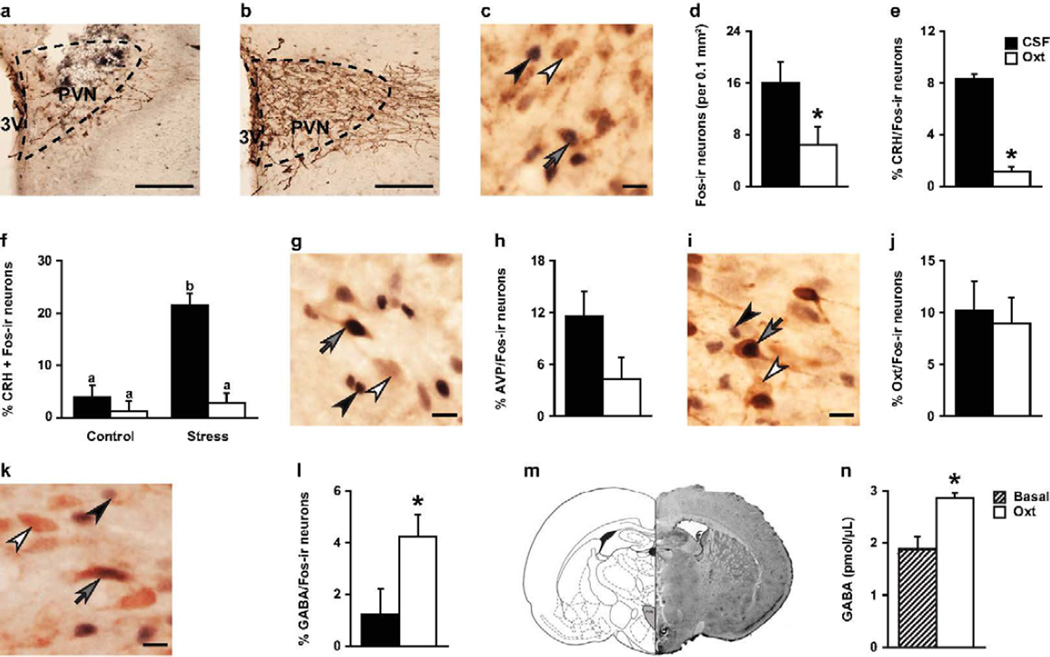Figure 3.
Oxytocin (Oxt) treatment increased GABA release and affected basal and stress-induced c-Fos expression in specific cytoplasmic neuronal populations in the PVN. Representative photomicrograph of vole brain section illustrating the (A) location of guide cannula placement in the PVN and (B) absence of tissue disturbance in the sections selected for immunohistochemistry staining and quantification in the PVN (staining includes c-Fos and AVP-ir using DAB-nickel and DAB, respectively). (D) In general, more c-Fos-immunoreactive (-ir) neurons (per 0.1 mm2) were observed in females injected with artificial cerebrospinal fluid (CSF) with Oxt (10 ng/200 nL/side) compared to females injected with CSF only. (E) In addition, Oxt-treatment decreased the percentage of neurons double-labeled for corticotrophin-releasing hormones (CRH) and c-Fos. (F) More specifically, Oxt decreased the stress-induced rise in the percentage of CRH neurons expressing c-Fos. No effect was observed on the density (neurons per 0.1 mm2) of (H) AVP/Fos-ir neurons or (J) Oxt/Fos-ir neurons. (L) Oxt did increase the percentage of neurons double-labeled for gamma-aminobutyric acid (GABA) and c-Fos. (M) Schematic drawing (left) and representative photomicrograph of vole brain section (right) illustrate location of microdialysis probe placement in the PVN. (N) Dialysate samples collected during the 30 min infusion of Oxt (Oxt; 1 µg/mL) had significantly more GABA than samples collected during basal conditions (Basal), labeled with an asterisk and determined by Independent Sample’s T-test (p < 0.05). (C,G,I,K) Double-immunohistochemical staining of c-Fos (either (C,G,I) black or (K) blue) and (C) CRH (brown), (G) AVP (brown), (I) Oxt (brown), or (K) GABA (pink). White arrowheads indicate CRH-ir, AVP-ir, Oxt-ir, and GABA-ir neurons, black arrowheads c-Fos-ir neurons, and grey arrows both-ir neurons. (A,B) Scale = 200 µm. (C,G,I,K) Scale = 10 µm. (D,E,L,N) Bars labeled with asterisks indicate a significant difference between the CSF-treated females (CSF) and Oxt-treated females (Oxt) for a specific measure as determined by a significant main effect for the Oxt treatment in a two-way ANOVA (stress × treatment, p < 0.05). Data are expressed as mean ± SEM.

